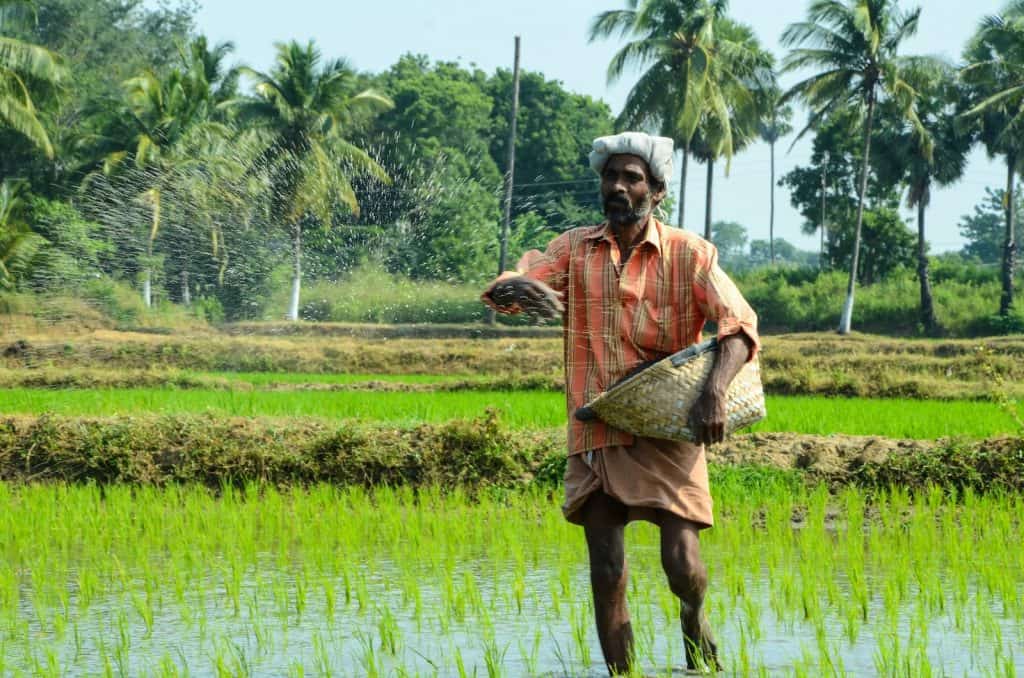The Food and Agriculture Organization of the United Nations reported that 60% of developing countries are rural while 85% are agricultural. IoT could potentially increase these developing countries’ productivity in the farming sector.
You would think that the economic situation of developing countries hinders the integration of IoT in their society. What if I told you that part of the obstacle towards agriculture IoT integration has to do with cultural and language barriers?
If you want to learn more about this, the benefits of Agriculture IoT, and other challenges developing countries face to incorporate these technologies, keep reading on!
The Application of Agriculture IoT
To start our discussion on agriculture IoT, let’s first discuss the “Farm to Table” concept, the “middlemen” in agriculture, and how IoT has significantly helped increase production, make it transparent, and make the movement faster.
“Farm to Table” is a social movement wherein some restaurants directly reach out to local farms for their ingredients.
Traditionally, restaurants get their produce from around the world or outside of the local areas. Due to the long shipping distance, the products are frozen, preserved, or picked too early, affecting the quality of taste and nutritional value.
Through directly transacting with local farmers, this social movement removes the “middlemen,” who function as traders, distributors, and providers between suppliers and customers. Middlemen are crucial in distributing national and international agricultural products from different parts of the country and the world.
With regards to agriculture software and IoT application, there’s a wide range of advantages, such as Geographic Information System (GIS), which allows farmers to gain significant insights through visual representation of the data like the topography of the area, identifying pests and disease, and helps monitor and control irrigation.
As for the national and international distribution of food, due to recent public concerns on the social and safety practices in the distribution process of produce, agriculture IoT has been used to provide transparent information to customers through real-time monitoring.
When it comes to implementing agriculture IoT in developing countries, there are several ways it could be applied to increase their agricultural sectors’ productivity.
The World Bank reported that the dry season negatively affected Vietnamese shrimp farmers due to ponds becoming too salty. The article presented how, through agriculture IoT, it could measure the water’s salinity and release freshwater with accuracy regardless of whether the farmers are there or not, as long as they have electricity and internet connection.
The World Bank has also stated that international food production will increase by 70% by 2050 to accommodate rapid population and dietary shifts. And due to climate change and other socio-economic factors have made production harder for farmers in developing regions despite 80% of the international agricultural production coming from these areas.
It’s well known that developing countries struggle to catch up to their developed counterparts regarding technology and its integration into their society. Part of the reason for the delay in the assimilation of IoT in these countries is the language barriers and struggle of socio-cultural acceptance.
Translation Services Bridging the Culture and Language Barriers
A study published by the Electronic Journal of Information Systems in Developing Countries discovered that socio-cultural and linguistic factors were the reason why the integration of ICT and IoT in developing countries was stagnant.
If IoT and tech-based companies want their products to be deployed and incorporated into developing countries’ societies, they must confront the linguistic and cultural barriers earlier on.
From my experience in the translation services industry with Tomedes, many software developers seek to translate their software, marketing, and training programs to non-native English-speaking countries as it’s the fastest way to overcome “resistance to change” and “fear of technology.”
A lot of people tend to forget that technology is only useful if society has a tech-driven culture that will help maintain and develop it.
Language barriers are an obstacle as they affect the dissemination of information regarding the benefits of these technologies and the education and training of a workforce with the skills to utilize and develop them. While socio-cultural barriers will depend if the technologies clash with cultural practices, there’s resistance to change and mistrust or fear of technology.
As you can see, the cultural and language barriers to the implementation and deployment of technology have long-term effects that trickle down to society’s acceptance, education, and training of a tech-based workforce, funding and support from the government, etc.
Due to this, I think translation services have a crucial role in making IoT more accessible and understandable to non-native speakers in developing regions.
Other Challenges in Implementing Agriculture IoT
There is a three-part IoT deployment strategy, which are:
- Consult – It’s when you evaluate the demand for a kind of technology needed and determine if you currently have the technology.
- Develop – This phase is where you build a cloud platform and develop the technology for buyers and potential clients.
- Deploy – Finally, you deploy and market the final IoT product based on your evaluation of the market demand.
Currently, there are small programs and initiatives in these developing countries that have begun integrating agriculture IoT in the farming sectors.
Going back to the World Bank’s article on Vietnamese shrimp farmers, these IoT initiatives have begun to work with smallholder farmers and farmer’s cooperatives to increase productivity.
However, besides cultural and language barriers, digital infrastructures, accessibility to electricity, cybersecurity, and governments and laws keeping up with the new technology are just some other factors that have made it harder for IoT to integrate.
Another factor that hinders IoT integration is political instability.
Through corruption, unnecessary bureaucracy, lack of planning and coordination, lack of regulations and enforcement, and high taxes have made it harder for local tech-based startups and foreign IoT companies to integrate into their society.
Conclusion
Cultural and language barriers significantly impact the integration of IoT in the agricultural sector of developing countries. Even though it’s just one of many factors that have hindered the development and deployment of agricultural IoT in these regions, through translation services, governments, non-profit organizations, and companies could start initiating the transition of society to a more tech-oriented one.

